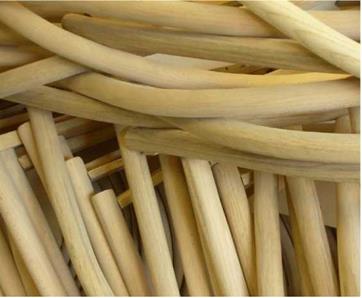Climatic and environmental conditions of humidity, moisture, air quality, and daylight all have a significant influence on materials and furniture. Aging processes are evident in a material’s decay, illustrating the temporal quality of furniture. Copper, wood, and leather will develop a patina over time. Patina is a term used to describe a surface condition produced by a material’s exposure to the natural elements such as moisture, air, and sunlight, as well as by age, wear, or rubbing. Ultraviolet radiation breaks down the natural pigment in wood, causing lumber to turn silver over time.
Aspects of aging and weather are vital considerations with regard to the specification of materials. As materials wear with use and weather over time, their properties will change. The surface and finish of wood needs to be routinely maintained. Would the natural patina and oxidation of select hardwoods influence how or when it is used in design?
Imperfections caused by age and use rarely hold value and, depending on the context, are not considered assets.
Cellular Structure (Open-Cell or Closed-Cell)
A material’s cellular structure influences its technical properties, including abrasion resistance, moisture resistance, density, hardness, and its ability to absorb odors. As an example, wood is composed of open (strawlike) and closed (rodlike) cells that run with the grain. Hardwoods are generally open-cell materials, and softwoods are generally nonporous (rodlike). The cellular structure of wood affects grain quality and determines the characteristics of its stability and workability. Wood is strong in the direction of its grain and significantly weaker in tension perpendicular to its grain (Figure 7.12).
![]()
|

Each material, whether classified as either natural or synthetic, has a unique cellular structure that contributes to its visual and visceral appeal, which, in turn, influences its inherent performance characteristics. For example, wood is not considered a homogeneous material due to its differing grain density, figure, and cellular structure within a specific tree or between different species. Therefore, the properties and workability of lumber may not be uniform. Steel, on the other hand, is a homogenous material, and its properties and workability are relatively uniform. The specific arrangement and content of a material’s molecular structure will influence its properties and workability and can help to determine whether a material is porous or impervious, transparent or opaque, flammable or fire resistant. In short, material properties are directly related to a material’s structure (considered at a microscopic level).



